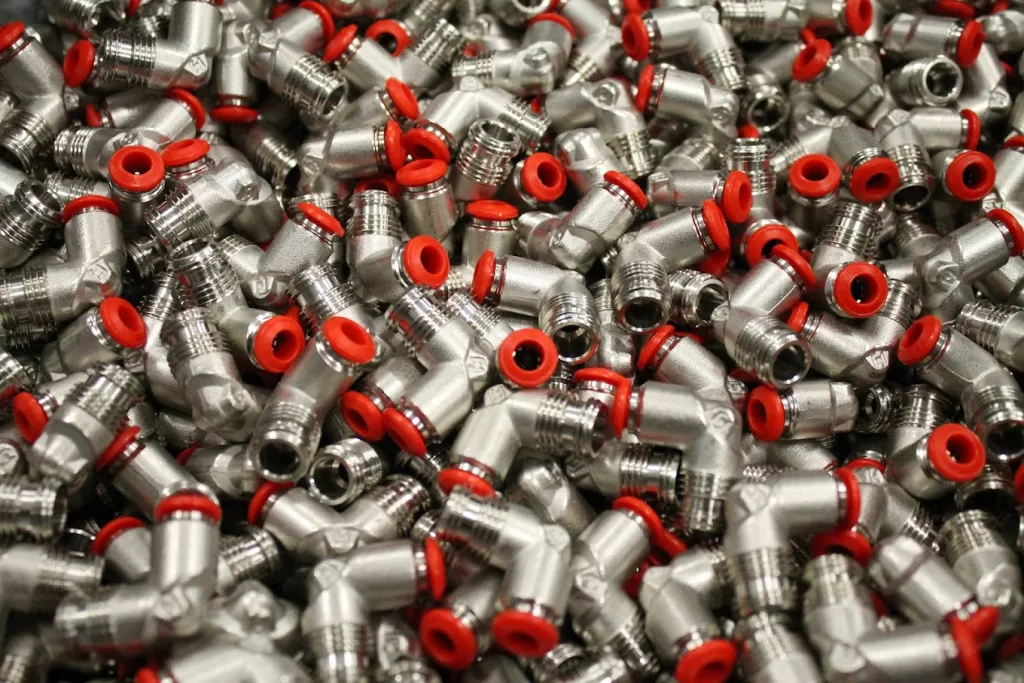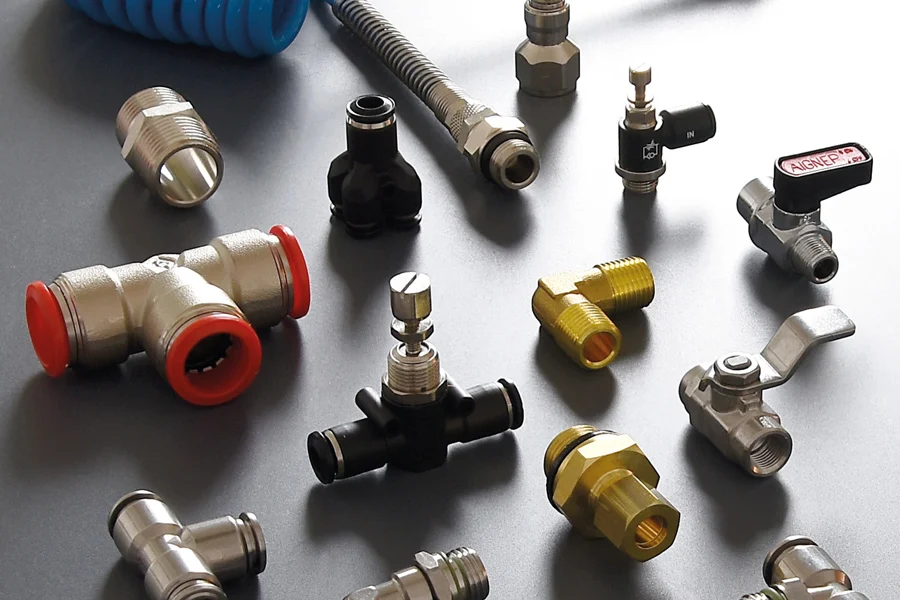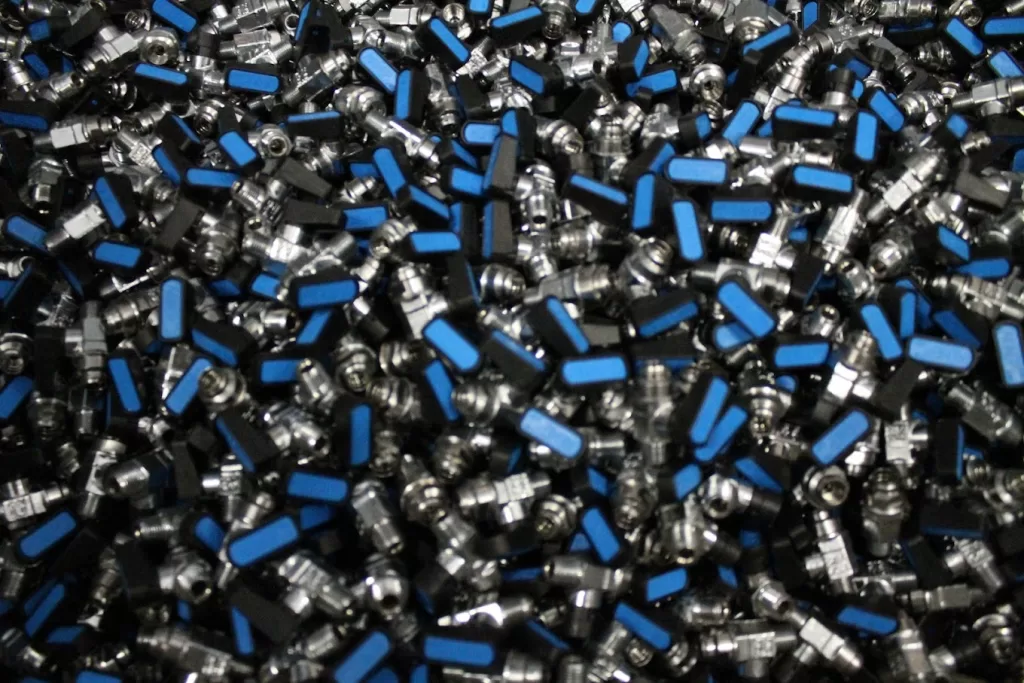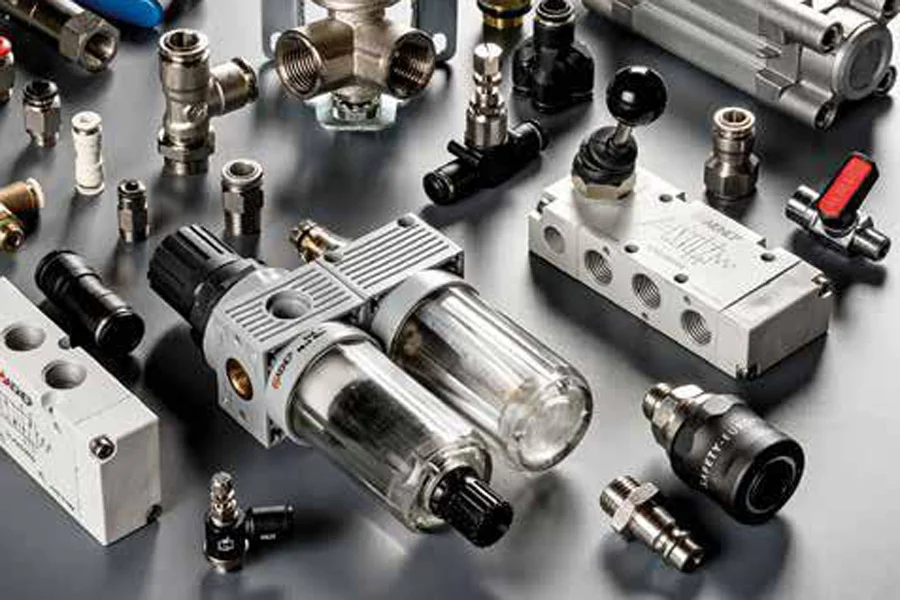Glossary & Dictionary of Pneumatic Terms
Products
•Actuator (Pneumatic Actuator, Pneumatic Cylinder, Air Cylinder, Air Ram)
What is a pneumatic actuator?
A device that converts compressed air into mechanical motion, commonly used for opening and closing valves or creating linear motion in automation systems.
•Air Compressor
What does an air compressor do?
Compresses and stores air for use in pneumatic systems. It’s essential for powering pneumatic tools and machinery.
•Compressed Air Piping (Stainless Steel, Maxair, Infinity Systems)
Piping used for systems designed to transport compressed air through industrial setups.
•Filter (Water Trap, Auto Drain)
What is a pneumatic filter?
A device that removes water, oil, and contaminants from compressed air. Commonly known as water traps, and some models feature auto drains to automatically expel collected liquids.
•Filter-Regulator-Lubricator (FRL Unit)
A range of devices that filter air, regulate pressure, and lubricate air to ensure the smooth operation of pneumatic tools and equipment.
•Solenoid Valve (Pneumatic Valve, DVC, Directional Control Valve)
A valve controlled by an electric current, which directs airflow within a pneumatic system to control movement or processes. Also known as a DVC (directional control valve).
•Air Fittings
Components that connect sections of air piping and tubing to facilitate the flow of compressed air between components.
ATS Pneumatics LTD
The only partner you need for pneumatic solutions
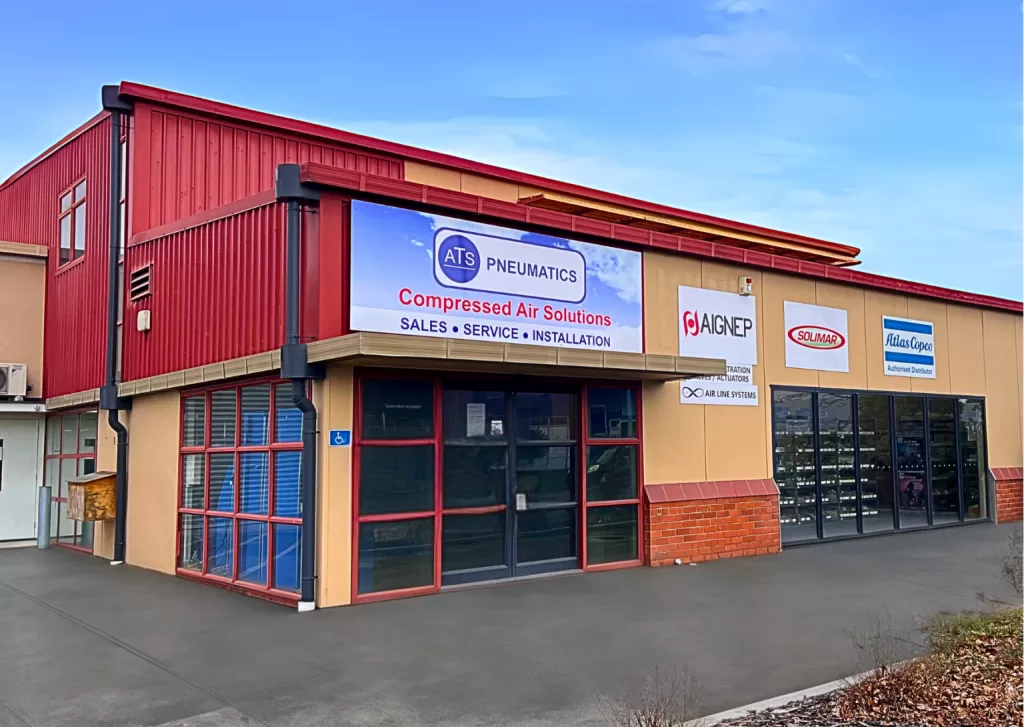
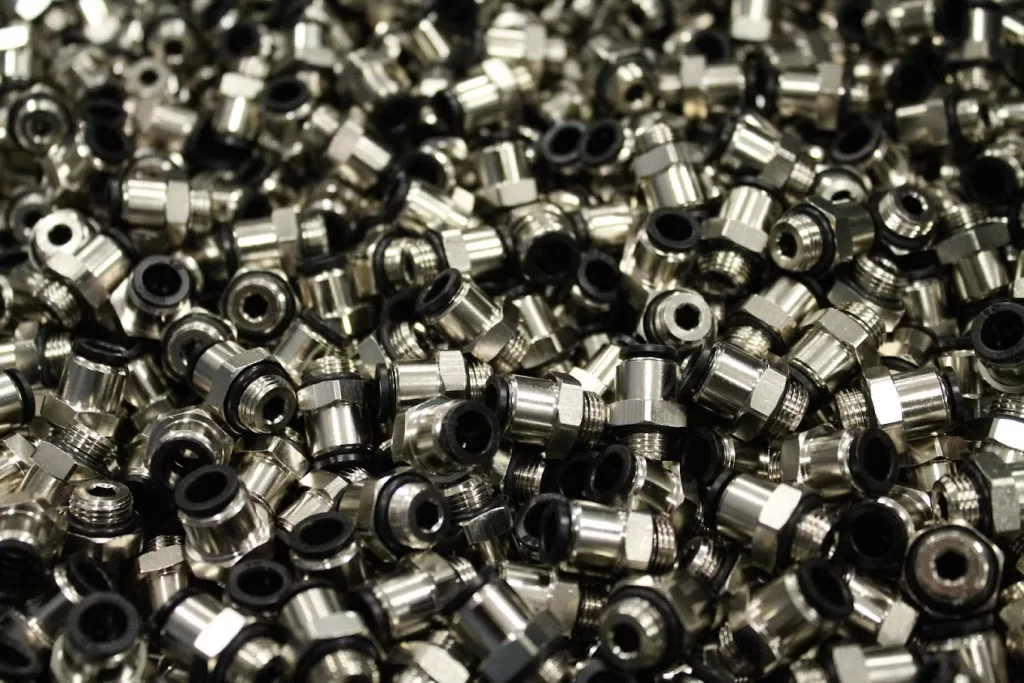
Services
•Pneumatic System Installation
ATS Pneumatics installs custom pneumatic systems tailored to specific industrial needs. Services include the installation of air compressors, actuators, piping, and more.
•Air Compressor Servicing
Regular inspection and maintenance of air compressors, ensuring efficiency and preventing system breakdowns.
•Actuator Manufacturing
ATS Pneumatics manufacture standard to custom actuators from our Christchurch workshop.
•Actuator Recommissioning (overhauls, repair)
The refurbishment and optimisation of actuators to prolong their lifecycle and ensure peak performance.
•System Troubleshooting
Identifying and resolving issues within pneumatic systems, such as leaks, pressure drops, or malfunctioning components.
•Consultancy Services
ATS Pneumatics provides expert consultancy for the design, setup, and optimisation of pneumatic systems and air compressor installations.
General Terms
•Compressed Air
What is compressed air used for?
Compressed air is used to power pneumatic tools, operate machinery, and drive various industrial processes.
•Pressure
What is pressure in pneumatics?
Pressure refers to the force exerted by compressed air on a surface, typically measured in PSI (pounds per square inch) or bar.
•PSI (Pounds per Square Inch)
A unit of pressure measurement, indicating the force exerted by the compressed air in a pneumatic system.
•Flow
What is flow rate in pneumatic systems?
The volume/quantity of compressed air delivered per unit of time, often measured in cubic feet per minute (CFM).
•Bar (Unit of Pressure)
A unit of pressure commonly used in pneumatic systems. 1 bar equals approximately 14.5 PSI.
•Circuit Design
What is pneumatic circuit design?
The process of creating a blueprint for the layout and operation of pneumatic systems to ensure efficient air flow and system performance.
•Solenoid
An electromagnetic coil that, when energised, creates a magnetic field to operate pneumatic valves or other mechanical components.
•Pressure Regulator
A device used to control and stabilise the air pressure in a pneumatic system, ensuring safe and consistent performance.
•Flow Control Valve
A valve used to regulate the speed and direction of air within a pneumatic system.
•Air Receiver Tank
A storage tank that holds compressed air for future use, providing a buffer to meet demand peaks in pneumatic systems.
•Air Leakage
The unwanted escape of compressed air from a pneumatic system, which can reduce efficiency and increase energy costs.
•Seismic Stress Resistance
The ability of a pneumatic system, particularly the piping, to withstand seismic forces, ensuring system integrity during earthquak
